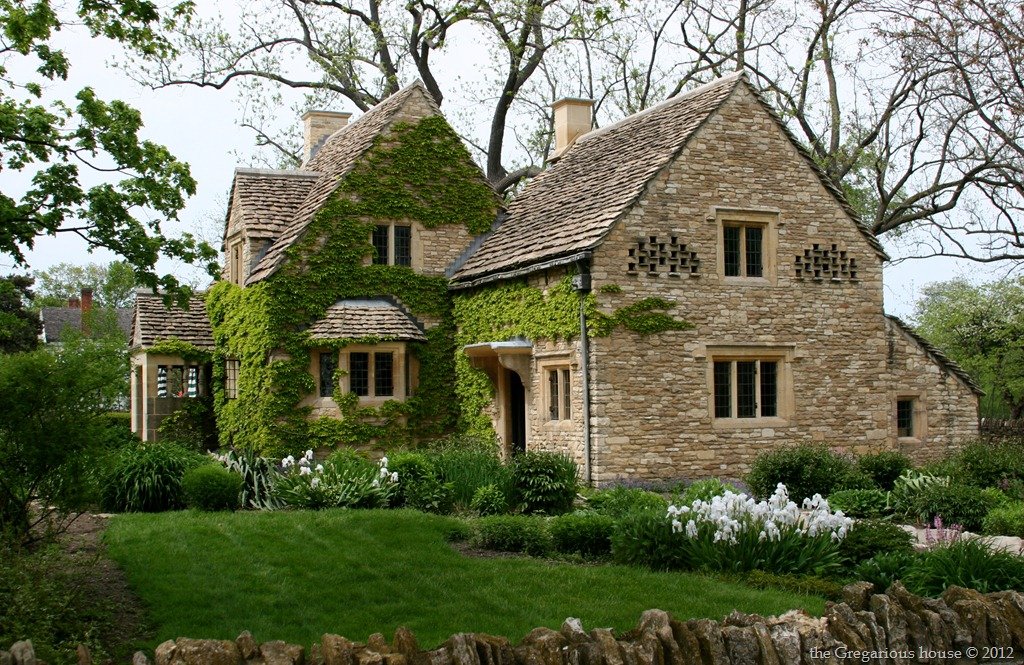#400. English Cottage with Authentic Stone Facade and Vertical Greenery Elements
The image showcases an exquisite example of English cottage architecture embodied in a stone house with characteristic elements of this architectural style. The facade is crafted from natural sandstone with irregular masonry, giving the structure an authentic, timeless character. Particularly noteworthy is the asymmetrical composition of the facade, where the left wing is partially covered with climbing ivy, creating an organic transition between architecture and the surrounding landscape.
The roof is executed in a traditional technique using stone tiles laid in an overlapping pattern, which not only provides reliable protection from precipitation but also creates a distinctive texture that complements the overall aesthetics of the building. The chimneys rising above the roof deserve special attention, emphasizing the vertical lines of the composition.
The facade design masterfully incorporates decorative elements — note the intricate stone lattices on the right wing of the house, serving both decorative and ventilation functions. Window openings with wooden frames have varied sizes and proportions, enhancing the sense of organic development of the building's architecture over time.
The entrance area is accentuated by a small stone canopy, which serves not only as a functional element protecting from the elements but also as a visual focus of the entire composition. The thoughtfully planned landscape design with flowering plants and a well-maintained lawn frames the building, creating a harmonious transition to the natural surroundings and emphasizing its connection to the place.
When designing your own home in a similar style, it's worth noting the use of natural materials, layered facade composition, thoughtful asymmetry, and integration of natural elements. This approach will allow you to create not just a building, but a true work of architectural art that will age beautifully and accumulate its own history.
